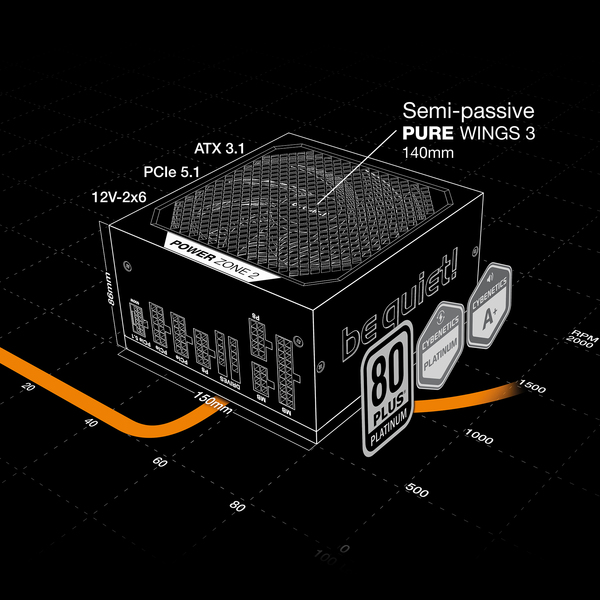How Much Power Do You Really Need? PSU Sizing for Modern Gaming Builds in 2025

Choosing the right power supply unit (PSU) for a gaming PC used to be a simple matter of wattage. But in 2025, with GPUs drawing more power and CPUs offering higher boost clocks than ever, it is critical to get PSU sizing right. Not just for stability, but also for efficiency, upgrade flexibility, and long-term reliability.
If you are planning to build or upgrade your gaming PC, here is what you need to know about how much power your system really needs.
Gaming GPU Power Draw Is Rising Again
Modern graphics cards are far more power-hungry than they were a few years ago. The NVIDIA RTX 5080 is expected to pull up to 350 watts under full load, and the RTX 5090 even more. AMD’s RX 9070 XT, meanwhile, typically operates around 300 watts. These figures do not include any headroom for overclocking or power spikes, which can exceed rated TDPs by 10 to 15 percent.
So, if you are building a high-end gaming system with one of these cards, plan for 350 to 450 watts just for the GPU.
CPUs Are Not Innocent Either
Top-end CPUs have also seen increased power consumption. Intel Core Ultra chips and AMD Ryzen 9000 series can both exceed 120 watts during sustained workloads, and burst beyond 200 watts under short boost conditions. This means even a mid-to-high-end CPU can use one-fifth of your total PSU capacity.
When combined with the GPU, storage, fans, and motherboard draw, many gaming PCs in 2025 require 600 to 700 watts of real power under full load.
Why You Should Not Just Match the Wattage
Many first-time builders make the mistake of buying a 650-watt PSU because their PC "only" draws 600 watts. But that leaves no room for:
- Future GPU or CPU upgrades
- Overclocking
- Normal power spikes during gameplay
- PSU efficiency losses over time
Instead, aim for a 20 to 30 percent power buffer. That means if your build uses 600 watts under load, look for a 750 or 850 watt PSU.
Why Efficiency Ratings Matter
Modern PSUs come with 80 PLUS ratings, such as Bronze, Gold, or Platinum. A higher efficiency PSU wastes less energy as heat, which means it stays cooler, lasts longer, and costs less to run over time. More importantly, high-efficiency units tend to have better internal components and more reliable power delivery.
For a performance gaming build, we recommend a minimum of 80 PLUS Gold. For systems with flagship GPUs or heavy multitasking, 80 PLUS Platinum is ideal.
12V 2x6 Is Now the Standard
The new PCIe 5.0 power connector, also known as 12V 2x6, is replacing the old 12VHPWR standard that caused issues in earlier 40-series GPUs. The 12V 2x6 connector is safer and better designed to handle the 300 to 600 watt loads required by next-gen graphics cards.
To future-proof your build, make sure your PSU includes native 12V 2x6 support. Reputable options from ASUS ROG and Antec already ship with this connector included.
Recommendations by Use Case
- Entry-level systems (RTX 5060, RX 9060 XT)
- Recommended PSU size: 600 to 650 watts
- Minimum rating: 80 PLUS Bronze
- Optional: Modular cables for tidier builds
- Mid-range systems (RTX 5070, RX 9070)
- Recommended PSU size: 750 to 850 watts
- Minimum rating: 80 PLUS Gold
- Look for native 12V 2x6 support
- High-end systems (RTX 5080, RX 9070 XT)
- Recommended PSU size: 850 to 1000 watts
- Minimum rating: 80 PLUS Gold or Platinum
- Strongly recommend modular design and robust cooling
- Extreme builds with overclocking
- Recommended PSU size: 1000 to 1300 watts
- Minimum rating: 80 PLUS Platinum
- Consider server-grade units with single rail designs
Conclusion
In 2025, a properly sized PSU is not just a support component. It is a critical part of ensuring your system runs smoothly, efficiently, and safely under load. Undersizing your PSU can lead to crashes, performance throttling, or even permanent component damage.
Choose a power supply with at least 20 percent headroom, strong efficiency, and native support for modern standards like 12V 2x6. It will help protect your hardware, reduce noise and heat, and give you flexibility for future upgrades.
If you are configuring a new gaming rig, we recommend checking the total system draw with a PSU calculator, or exploring our custom PC builder where we pre-match the right PSU to your components.

